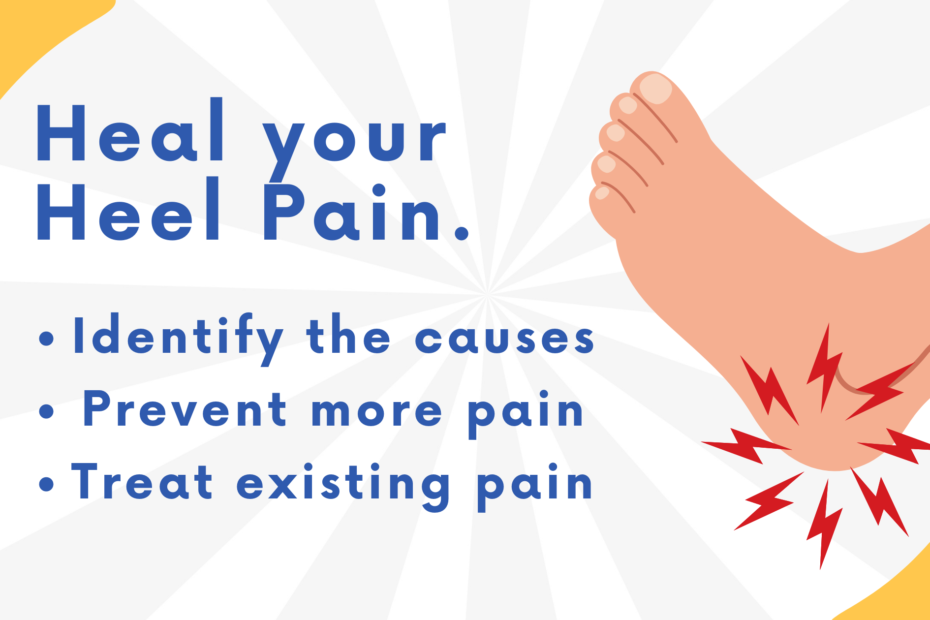Heel pain is a common condition that affects many individuals around the globe. The intensity can vary from a slight nuisance to an incapacitating discomfort that hampers daily activities. Whether you’re a runner, an office worker, or someone living an active lifestyle, understanding the causes of heel pain and the available treatments can provide significant relief and prevent future recurrences. In this comprehensive guide, we’ll explore the causes, preventive measures, and treatment options for this ubiquitous ailment.
Causes of Heel Pain
Heel pain can originate from several sources, each with its unique characteristics and causes. Here are the most common:
1. Plantar Fasciitis: One of the most common causes of heel pain, plantar fasciitis involves inflammation of the plantar fascia, a band of tissue that runs along the bottom of your foot and connects your heel bone to your toes.
2. Achilles Tendinitis: This is caused by overuse or strain on the Achilles tendon, the band of tissue that connects your calf muscles at the back of the lower leg to your heel bone.
3. Heel Bursitis: This involves inflammation of the back or bottom of the heel, often caused by landing awkwardly or hard on the heels or pressure from footwear.
4. Heel Spurs: These are abnormal growths of bone on the bottom of your heel, often linked to plantar fasciitis or long-term arthritis. This is the least common cause of heel pain.
5. Stress Fractures: Common in athletes and runners, these are tiny breaks in the heel bone often caused by repetitive stress.
Prevention of Heel Pain
Prevention is often the best treatment. Here are some preventive measures you can take:
1. Proper Footwear: Ensure you wear shoes that fit properly and offer good support, especially during physical activities.
2. Warm Up and Cool Down: Don’t neglect your warm-ups and cool-down exercises. These routines prepare your muscles and tendons for the activity ahead and help them recover afterward.
3. Healthy Weight: Maintaining a healthy weight can prevent undue pressure on your feet, reducing the risk of heel pain.
4. Strength and Flexibility Exercises: Regularly performing exercises to strengthen your foot, calf, and Achilles tendon can help prevent injury and pain.
Treatment Options for Heel Pain
If heel pain has already set in, here are some effective treatments:
1. Rest and Ice: For immediate relief, rest your feet and apply ice to the affected area. This can help reduce inflammation and pain.
2. Pain Relievers: Over-the-counter non-steroidal anti-inflammatory medications can provide temporary relief. It’s important to use these as directed by a healthcare professional.
3. Physical Therapy: Specific exercises can help strengthen your muscles and ligaments, improve balance and flexibility, and promote healing.
4. Orthotic Devices: Shoe inserts or custom orthotics can provide support and relief by redistributing pressure and changing the positioning of your foot.
5. Surgery: In rare cases, when other treatments have not worked, surgery may be considered.
6. Alternative Therapies: Therapies like stem cell injections and shockwave therapy have been found to be effective in many difficult cases.
Remember, it’s essential to seek professional help if you’re experiencing persistent heel pain. A healthcare provider can give you a precise diagnosis and treatment plan tailored to your needs. The information in this blog is a guide and should not be used as a substitute for medical advice.
Understanding the root causes of heel pain, engaging in preventive measures, and knowing the treatment options can go a long way in managing and overcoming this common ailment. As the saying goes, “An ounce of prevention is worth a pound of cure.” So, take those preventative steps, and keep your feet happy and healthy!

